Bringing
Land Stewardship
Back to School

Passion is lifted from the earth itself by the muddy hands of the young; it travels along grass-stained sleeves to the heart. If we are going to save environmentalism and the environment, we must also save an endangered indicator species: the child in nature.
– Richard Louv
After the pandemic crumbled the foundation of “school” as we knew it last year, this back to school season comes bearing an additional layer of unease as parents and caretakers are also holding the uncertainty of how the pandemic will shape the school year, education, and the health of their young ones.
If anything, the past year has caused us all to pause and look at every existing system differently, now that we know just how adaptable we really are. Last year, the entire world was able to change behavior when the environment called for it.
So what if we changed everything (or even just a few things) in the way we guide and teach the tiny hands that will soon be holding the earth?
What if we changed the way we raise, educate and steward our children – bringing the sweet seedlings of imagination and ripe minds back to a place where there are ample conditions to grow? After all, their little palms are the ones we will be handing this earth to and by aiming to change the way we raise our kids, we, by default, change our own way of being and stewarding the earth, as adults. So how can we, as leaders, educators, parents, caretakers, and family members steward their growth?
Well, we roped in some perspectives from farmers, ranchers, moms, dads, and activists on ways we can send kids running back to nature’s wide open arms, in touch with the vast ecosystem of which they are a part, where learning about local foods is just as important as math, where fresh whole foods are the standard for all school lunch programs, and the connection between youth and earth is a part of the educational philosophy and value system.
Read on to watch, learn and read these refreshing perspectives on raising kids to the tune of land stewardship.
Bringing Nature
Back to School
compared to 7.5 hours on a screen indoors.

Bringing Local Food Back to School
Briiiiiiiiiing. The sound of the lunch bell is music to any kid’s ears. A chance to get fresh air, hopscotch with friends and finally satiate that grumbling belly!
But for the kids who don’t bring their lunch from home, what is served up to the 30 million kids who take part in the National School Lunch Program (NSLP)? If you haven’t seen what’s on the menu, it’s shocking. The daily menu is full of processed, GMO, cheap food that is high in sugar content, unhealthy fats and void of any locally grown or seasonal ingredients. Now, this doesn’t speak to all schools, hats off to those transforming the system from the core, but it does represent the vast majority of public schools.
The truth remains, school lunch programs are vital.
In total, 5 billion lunches are served annually.
Of the 30 million students being served, 20 million children receive free lunches because their families have a household income that is below 130% of the established Federal poverty level.
Another 5 million children receive reduced-price lunches because their household income is 185% of the poverty level or below.
This leaves the most vulnerable kids, often from marginalized communities, eating foods with ingredients known to cause diabetes, obesity, chronic illness and create habits and a taste for junk food. The domino effect is that this impacts the ability to stay focused in the classroom and learn.
But alas, there is always another way. People are doing it. Parents are succeeding. School administrators are making change from within. They are finding ways to bring local food to the lunch line, supporting local organic and regenerative farmers by purchasing produce regularly, and reconnecting kids to the culture of food as a source of health and community. And not surprisingly, it’s all happening at the grassroots level. Which means, you and I, and every community member can be the rocketeers of change. So while every school lunch program is different, depending on various factors at play, we’ve found that elevating the stories of success can be the catalyst fuel for passionate parents, school administrators and changemakers to bring to the parent meetings, principal chats, teacher conferences, farmers markets and community gatherings.
TAKE A LOOK AT HILARY BOYNTON AKA “THE LUNCH LADY”
A frustrated mom who became the solution to the school lunch program in her local community. She is dedicated to creating a model that can be applied in any community with a goal of returning to the way our ancestors ate before big agriculture controlled our farms and grocery stores, bringing seasonal, local, and nutrient dense food back to the school lunchroom table. She created School of Lunch and it shows the the potential of what school lunch programs can look like:

We need to go back to putting love in the food. It’s a major ingredient lacking today.
Tune in for a LIVE back to school webinar and Q&A with Hilary and her co-founder Chuck Barth in our online community on Wednesday, Sept 1 at 5p PT / 8p ET. Learn more details and RSVP HERE.
TAKE A LOOK AT NATIVE FARM-TO-SCHOOL RESOURCe GUIDE
Created by the First Nation’s Development Institute, a comprehensive manual for planning and implementing farm-to-school programs in Native American communities. Native farm-to-school programs have become an important way to introduce traditional foods and practices into curriculum, as well as to promote Native health, self-reliance and sustainability.
“An additional benefit of vibrant farm-to-school programs is the positive impact on the local community. This includes the economic benefits that naturally occur by circulating more dollars through the local economy, as well as providing opportunities for the community to come together around planned activities or events. In Native communities, farm-to-school programs can also act as a strong catalyst to revive heirloom crops, traditional recipes and culturally-significant traditions and practices.”

You can download the guide HERE.
Take a look at ALMA Backyard Farms
Alma Backyard Farms was inspired by the voices and ideas shared by juvenile offenders and prisoners eager to transform their lives and communities by “giving back” to the communities they “took from” and were taken away from. For most people experiencing incarceration, there are few opportunities to see and interact with nature and few opportunities to provide nurture to others. Yet few are given the opportunities to learn skills and make that possible.
ALMA has listened to the formerly incarcerated and been inspired by their willingness to reorient their lives as caretakers of community. Recognizing that Los Angeles is a place where no life or space is wasted, ALMA creates multiple opportunities for women and men who were incarcerated to give back to the health and safety of communities by growing food in and for these communities.
Rooted in restorative justice and environmental stewardship, ALMA started in 2013 to implement this project of reclaiming lives, repurposing land and reimagining community
ALMA’s youth program provides place-based education for children & youth to learn about preparing healthy meals, gardening, and waste reduction
Learn more HERE.
Take a look at The Ecology Center
Their partnership with The Farm Lab. The Farm Lab serves their local district’s 5,400 kindergarten-through-sixth-grade students on its 10-acre campus. A recent article beautifully captured their vision:
“The Farm Lab was the idea of Encinitas resident Mim Michelove, CEO and President of Healthy Day Partners. The site had been donated to EUSD as part of a mitigation deal for constructing the Encinitas Ranch housing development. It needed to be turned into a school campus or it would start accruing annual penalty fees to the state. The school district didn’t need another school, so they came up with a creative idea for a campus that would preserve some of Encinitas’ remaining open land and still be an educational site for its students.
“I took on the challenge, and added a community food forest and communications role,” Michelove said. “I had a clear vision from the start, to build a more inviting campus where all students would feel valued, to convey environmental messaging in everything the students used and saw, to grow as much healthy food as possible for all EUSD kids, to have the programming use the outdoors as an experiential teacher, and to have the programming, at least in part, reflect the environmental and nutritional values being used in our farming practices.”
We see a path toward meaningful systems change through shifting behaviors and increasing access at the community level. This supports cultural shift through education, where the next generation can gain access to vocational training and apprenticeships on the farm. This will ensure our greater community can experience where our food comes from and gain access to it in more diverse ways.
Here are additional resources for parents, administrators and active citizens ready to learn more about changing their local school lunch program:
(for parents)
And when it comes to what to pack in your kid’s lunch, if you have the privilege of affording another option, there are a few brands taking the initiative to support farmers by sourcing ingredients that support the health of growing minds, bodies and hearts: Kiki Milk, Nature’s Path,Happy Family, White Leaf Provisions
Bringing the Farm Back To School

There’s so many kids that one or two generations ago, had a grandpa or uncle that had a farm to go to. But now kids are one or two generations removed from a farm and they don’t have that direct connection to a farm or they don’t really have a direct connection of how food is grown.
Mark and Kena Guttridge, regenerative farmers from Boulder Colorado (also recently featured in our Meet A Farmer series), see their farmland as a classroom without walls, desks and hierarchy. They immediately noticed the magnetic potential of their land for people seeking community and learning about how food is grown, and opened their gates for any and all who were willing to take the invitation to connect to the land.
Take a look at their immersive youth program and listen to how impactful it has been for parents, kids and the community:
In conclusion
Kids are ready and waiting for ways to contribute and care for the earth.
The bigger question is, are we giving them the chance?
For years now, various systems, legislation, colonization, social injustices and routines of convenience and privilege have separated us all from nature. Let us remember that children, like us, are products of their own environment. So we, as caretakers of this next generation, have a chance to remember that learning doesn’t happen overnight, it happens in small, micro-moments – watching a butterflies land on blooming milkweed, seeing a banana peel all the way through the compost cycle, getting a chance to plant a seed, nurture the sprouting plant, rooting for it every day to thrive, until the beautiful moment where it’s harvested from the earth where the sweet taste of a fresh carrot combined with the grit of the soil becomes an experience they will never forget and always want to repeat, shaking the hand of their local farmer who grew the produce on their Tuesday lunch plate – these are small moments of stewardship that seed awe for the earth and calling to care for it. There are ripe moments ready for change – at home, at school, in the lunch box, and on the farm.
Bright-eyed and bushy tailed stewards of the earth are looking up to us with open minds, endless curiosity and outstretched palms.
What moments will you offer them today?
LINKS + RESOURCES
School of Lunch
The Ecology Center
Growing Minds
Farmer Time (UK)
Alma Backyard Farms – Activity Sheet
